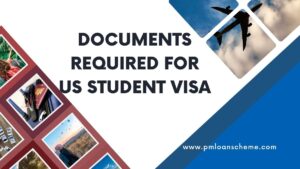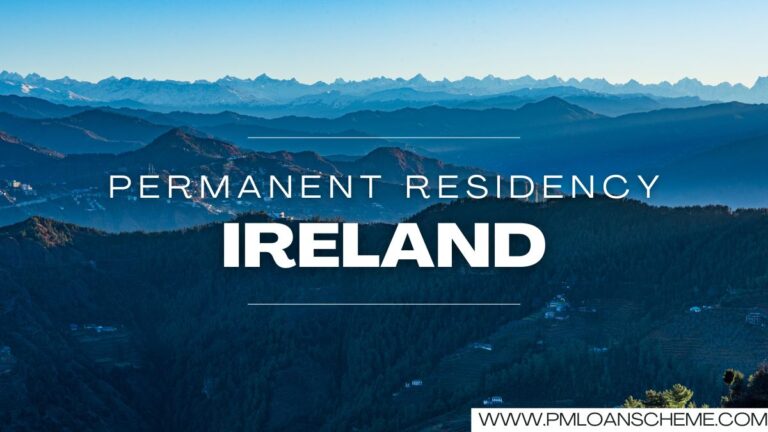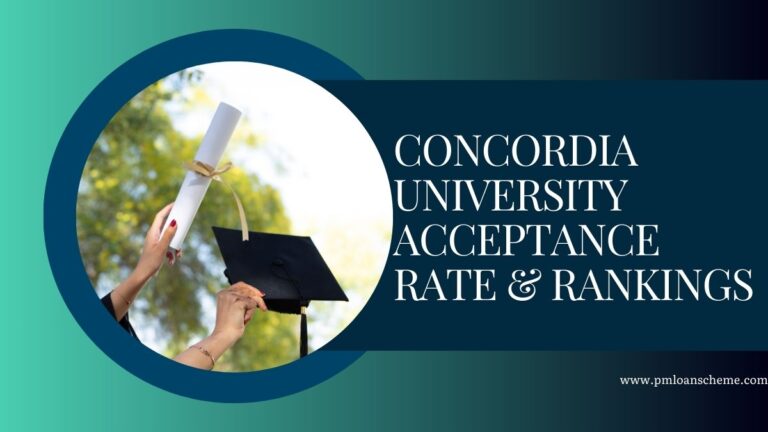Documents Required for US Student Visa: Gaining admission to a recognized university and navigating the visa interview process are key steps in obtaining a US student visa. This requires submitting authentic and accurate documents to prove your qualifications and eligibility. However, it can be challenging to understand the specific documents needed, like the I-20 and DS-160 forms, without adequate guidance.
Errors during the document collection can negatively affect your visa application. In this blog, we will provide a step-by-step overview of the document requirements for obtaining a US student visa, documents required for us student visa interview, required documents for us student visa, documents for us visa verification.
Additionally, be aware that as of June 17, 2023, the application fee for a US visa has increased to $185, up from the previous fee of $160, representing a $25 increase.
Change B1/B2 Visitor Visa to F1 Student Visa
Documents Required for a US Student Visa
Studying in the United States is an aspiration for many international students, offering access to world-class education and diverse cultural experiences. However, the process of obtaining a US student visa can be complex, requiring various documents and compliance with specific regulations. This comprehensive guide will walk you through the essential documents required for a US student visa, focusing primarily on the F-1 visa, the most common type for international students.

Types of US Student Visas
Before diving into the documentation, it’s important to understand the different types of student visas available:
1. F-1 Visa
The F-1 visa is designated for students attending accredited academic institutions, including universities, colleges, and language programs. This is the most common visa for international students.
2. M-1 Visa
The M-1 visa is intended for students pursuing non-academic or vocational training. This includes technical schools or other specialized institutions.
3. J-1 Visa
The J-1 visa is for exchange visitors participating in programs that promote cultural exchange. This includes certain high school programs, college students, and professionals.
Understanding which visa type applies to your situation is crucial, as the documentation requirements may vary.
Key Requirements for the F-1 Visa
To apply for an F-1 student visa, applicants must meet several eligibility criteria:
- Full-time Enrollment: Students must be enrolled in a full-time academic program at an institution certified by the Student and Exchange Visitor Program (SEVP).
- Financial Support: Proof of sufficient financial resources to cover tuition and living expenses in the US.
- English Proficiency: Students may need to demonstrate English language proficiency through tests such as the TOEFL or IELTS.
- Ties to Home Country: Applicants should demonstrate intent to return home after their studies, usually through familial, economic, or social connections.
Essential Documents Required for a US Student Visa
- Valid Passport: Your passport must be valid for at least six months beyond your intended stay in the United States. It should contain at least one blank page for the visa.
- Form I-20: This document, issued by your US educational institution, confirms your acceptance into a program and outlines the financial support required for your studies. It is crucial for initiating the visa application process.
- Form DS-160: The Online Nonimmigrant Visa Application (DS-160) must be completed online. After submitting this form, you will receive a confirmation page with a barcode, which must be printed for your visa interview.
- SEVIS Fee Receipt: The Student and Exchange Visitor Information System (SEVIS) fee must be paid prior to your visa interview. The current fee for F-1 students is $350.
- Visa Application Fee Receipt: You must pay a non-refundable visa application fee, which is currently $185. This fee can be paid through various methods, such as online transfer or in person at a bank.
- Financial Evidence: You will need to demonstrate your financial ability to support your studies in the US. Acceptable documents include:
- Bank statements covering the last three years.
- Tax records and pay stubs from previous employment.
- Documentation of scholarships or financial aid, if applicable.
- Academic Documents: These should include official transcripts and diplomas from previous educational institutions. Depending on your program, you may also need standardized test scores (like the TOEFL, IELTS, GRE, or GMAT).
- Photographs: Two passport-sized photographs that meet the specific US visa photo requirements.
- Interview Appointment Confirmation: You must schedule a visa interview at a US embassy or consulate and bring the appointment confirmation letter.
- Additional Supporting Documents:
- Ties to Home Country: Documents proving family ties or property ownership can support your application.
- Statement of Purpose: A brief letter explaining your reasons for studying in the US and your future plans.
The Student and Exchange Visitor Information System (SEVIS) is an online platform run by the U.S. Department of Homeland Security (DHS) that tracks and oversees the activities of international students and exchange visitors in the United States. This system is administered by the Student and Exchange Visitor Program (SEVP), which is responsible for certifying U.S. educational institutions. If a school is not certified by SEVP, you cannot enroll there as a student.
Documents Needed for Scheduling a VAC Appointment
To obtain a U.S. student visa, students must provide their biometric information to the U.S. government. This is done by making an appointment at a Visa Application Center (VAC), where students’ fingerprints and digital photos are taken for security purposes. This appointment is sometimes referred to as an Offsite Facilitation Center (OFC) appointment. The following documents are required for attending the VAC appointment:
- A Valid Passport
- DS-160 Form
- Appointment Confirmation Page
Important Note: Ensure that the details on your DS-160 and passport match to avoid any delays. Certain items, such as electronic devices (phones, tablets), food, large bags, cigarettes, lighters, sharp objects, aerosols, and weapons, are prohibited at the VAC.
Documents Required for the US Student Visa Interview
After successfully scheduling your visa interview, it’s essential to prepare for this final step in the application process. Indian students can arrange their visa interviews within 56 days of registration, but they must have the following mandatory documents prescribed by the U.S. embassy or consulate:
- Original Documents: It’s crucial to bring original documents, as failure to do so could result in a visa denial.
Guidelines for U.S. Student Visa Documentation
As you prepare your documents, your university will guide you on how to upload them in the correct format and size on specified platforms. Here are some general guidelines to keep in mind:
- All financial and civil documents must be uploaded to the U.S. Consular Electronic Application Center (CEAC) at the National Visa Center (NVC).
- CEAC accepts files in JPG, JPEG, or PDF formats with a size limit of 2 MB.
- Make sure to upload all necessary personal documents (such as your birth certificate and passport) and financial documents (like education loans and fixed deposits). There are also optional documents that you may include.
WES Evaluation
The World Education Services (WES) is an agency that evaluates academic credentials, translating them into U.S. and Canadian educational standards. While many U.S. universities require a WES evaluation for international students, some are beginning to accept a wider range of grading scales, reducing the necessity for WES evaluations due to the increasing number of international students.
Preparing Your Document Checklist
Creating a well-organized list of required documents for your U.S. visa application can help streamline the process. It’s advisable to gather these documents as early as possible, as unforeseen delays may occur.
If you have further questions or need personalized assistance with your documentation, consider scheduling a visa counseling call with an expert education counselor. They can provide comprehensive guidance on every aspect of the U.S. student visa application process.
The Application Process for a US Student Visa
- Step 1: Acceptance to a US Institution
First, apply and gain acceptance to a SEVP-approved educational institution in the United States.
- Step 2: Pay the SEVIS Fee
After receiving your Form I-20, pay the SEVIS fee and keep the receipt.
- Step 3: Complete the DS-160
Fill out the DS-160 form online and print the confirmation page.
- Step 4: Pay the Visa Application Fee
Pay the non-refundable visa application fee and save the receipt for your interview.
- Step 5: Schedule a Visa Interview
Create an account on the US Visa Information and Appointment Services website to schedule your visa interview.
- Step 6: Prepare Required Documents
Gather all necessary documents as outlined above to present at your interview.
- Step 7: Attend the Visa Interview
During the interview, be prepared to answer questions about your educational plans, financial situation, and ties to your home country. Be honest and clear in your responses.
Frequently Asked Questions (FAQs)
How long does the visa application process take?
The processing time for a US student visa can vary based on the embassy or consulate’s workload and the time of year. It is recommended to apply as early as possible after receiving your acceptance letter.
Can I work while on an F-1 visa?
F-1 students can work on-campus for up to 20 hours per week during the academic year and full-time during breaks. Off-campus employment requires special authorization.
What should I do if my visa application is denied?
If your visa application is denied, you will receive a letter explaining the reasons. You may reapply, addressing the issues raised in the denial or seeking further clarification.
Are there scholarships available for international students?
Yes, many universities offer scholarships to international students, which can help reduce educational expenses.
How can I check the status of my visa application?
You can check your visa application status online through the Consular Electronic Application Center (CEAC) using your application ID and date of birth.
Conclusion
Navigating the US student visa application process can seem daunting, but being prepared with the right documents and understanding the requirements can simplify the journey. By ensuring that you meet all eligibility criteria and providing accurate documentation, you can enhance your chances of securing a student visa and embarking on your educational adventure in the United States.


